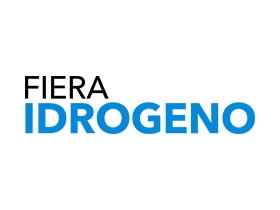Elettrolizzatore alcalino
La modellazione dinamica di un elettrolizzatore alcalino
Pietro Bianchi - Leonardo Integration
Simulazione ed ottimizzazione dinamica di un sistema di accumulo di energia rinnovabile multi-fonte ad idrogeno compresso.
Presentazione PDF in lingua inglese
Climate change is forcing the world to speed up efforts for drastic global co2 emission reduction
The effects of climate change can today be seen globally. Record floods, forest fires and droughts are in the news almost every week.
Now governments have set ambitious CO2 reduction targets - some of which already need to be fulfilled within the next decade.
The technology race has begun - but how can companies decide on the best system architecture with so many options for clean energy production, conversion and storage available?
Why sector coupling?
- Traditional market for electricity, heat and mobility
- Relatively simple technology
- Little interaction between the different supply sectors
- Reliable, cheap and convenient
- But: High amount of greenhouse gas emissions and consumption of resources
- Future: Increasing (fluctuating) renewable energy and elimination of fossil-based energy sources makes use of novel energy storage solutions essential - but which one is right for my infrastructure?
Technology options for energy storage with kpi
TES:
- Efficiency: medium
- Cost: low
- Capacity: large
- Sector-Coupling: Electricity, Heat
Conventional Battery:
- Efficiency: high
- Cost: medium
- Capacity: small
- Sector-Coupling: Electricity + Mobility
LAES:
- Efficiency: high
- Cost: high
- Capacity: medium
- Sector-Coupling: Electricity, Cooling
Hydrogen production and storage:
- Efficiency: medium
- Cost: high
- Capacity: large
- Sector-Coupling: Electricity, Mobility, Heat
The presentation continues with slide on
- PROPOSED APPROACH
- KEY MODELICA CONCEPTS
- DYNAMIC OPTIMIZATION APPROACH
- MULTI-ENERGY SYSTEM MODEL FOR USE-CASE
- FROM SCIENTIFIC ARTICLE TO MODEL
- USE-CASE FOR HYDROGEN - OVERVIEW
- CHARACTERISTICS OF DIFFERENT RENEWABLES
The effects of climate change can today be seen globally. Record floods, forest fires and droughts are in the news almost every week.
Now governments have set ambitious CO2 reduction targets - some of which already need to be fulfilled within the next decade.
The technology race has begun - but how can companies decide on the best system architecture with so many options for clean energy production, conversion and storage available?
Why sector coupling?
- Traditional market for electricity, heat and mobility
- Relatively simple technology
- Little interaction between the different supply sectors
- Reliable, cheap and convenient
- But: High amount of greenhouse gas emissions and consumption of resources
- Future: Increasing (fluctuating) renewable energy and elimination of fossil-based energy sources makes use of novel energy storage solutions essential - but which one is right for my infrastructure?
Technology options for energy storage with kpi
TES:
- Efficiency: medium
- Cost: low
- Capacity: large
- Sector-Coupling: Electricity, Heat
Conventional Battery:
- Efficiency: high
- Cost: medium
- Capacity: small
- Sector-Coupling: Electricity + Mobility
LAES:
- Efficiency: high
- Cost: high
- Capacity: medium
- Sector-Coupling: Electricity, Cooling
Hydrogen production and storage:
- Efficiency: medium
- Cost: high
- Capacity: large
- Sector-Coupling: Electricity, Mobility, Heat
The presentation continues with slide on
- PROPOSED APPROACH
- KEY MODELICA CONCEPTS
- DYNAMIC OPTIMIZATION APPROACH
- MULTI-ENERGY SYSTEM MODEL FOR USE-CASE
- FROM SCIENTIFIC ARTICLE TO MODEL
- USE-CASE FOR HYDROGEN - OVERVIEW
- CHARACTERISTICS OF DIFFERENT RENEWABLES
Fonte: Fiera Idrogeno ottobre 2022 workshop
Settori: Ambiente, Chimica, Combustibili, Efficienza energetica industriale, Energia, Energia Elettrica, Energy storage, GAS, Idrogeno, Rinnovabili
Mercati: Chimica, Petrolchimica, Plastica
- Paolo Di Marco
- Paolo Di Marco
 English
English





























